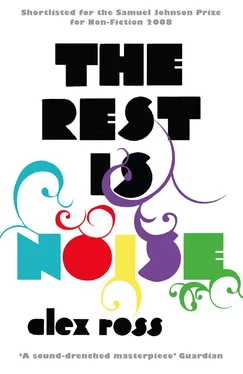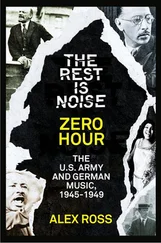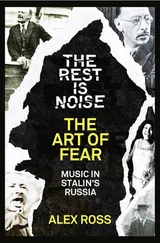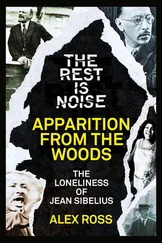The ballet Apollon musagète, the second panel in Stravinsky’s sacred triptych, is a serene spectacle of art in contemplation of itself: the young god Apollo matures and achieves mastery in the company of the muses Calliope, Polyhymnia, and Terpsichore. The scoring, for strings alone, reverses the post-Rite trend toward hard sonorities of winds and brass, which, in a typical feat of chutzpah, Stravinsky now chided his contemporaries for overexploiting. (“The swing of the pendulum was too violent,” he wrote in his Autobiography, as if someone else had set the pendulum in motion.) Apollo floats by on straightforward major-key harmonies and draws on a vein of tender melody; collage-like cutting and layering give way to a smooth, unbroken surface.
In a prior Ballets Russes season, the airy conception of a “white ballet” might have been realized in an annoyingly precious way. With the arrival of George Balanchine, though, Stravinsky found his creative other half. Balanchine’s project of recapturing the equipoise of classical dance through modern choreography—sometimes athletic, sometimes abstract—was the mirror image of Stravinsky’s new style. The union of dance and music suggested a higher union of body and spirit. Boris de Schloezer, who earlier in the de cade had attacked the composer for perpetrating musical jokes, grasped the new Stravinsky when he wrote, “Logically, after Apollo, he ought to give us a Mass.”
This Stravinsky more or less did, in an attitude of grief. In August 1929 the composer was stunned by the sudden death of Diaghilev, his discoverer, protector, and substitute father, and his distress was intensified by the fact that he had not had the chance to make proper farewells; the two men had lately bickered and fallen out. Meanwhile, Yekaterina grew sicker and more devout. Icons and candles filled the Stravinsky home, and there was talk of building a private chapel. Out of this fervid atmosphere arose the Symphony of Psalms.
The texts come from the Latin vulgate versions of Psalms 38, 39, and 150, but the music has something intangible in common with Russian Orthodoxy. For the American critic Paul Rosenfeld, it “called to our mind the mosaic-gilded interior of one of the Byzantine domes … from whose vaulting the Christ and his Mother gaze pitilessly down upon the accursed human race.” The first chord fulfills Rosenfeld’s cathedral metaphor: E-minor triads in the bass and treble are arranged around columnar Gs in the middle registers. Throughout, the habitually economical composer enlarges his sense of space. The setting of Psalm 150 (“Praise God in his holy place, praise him in the heavenly vault of his power”) goes on for a relative eternity of twelve minutes.
The Symphony is not all frozen architecture. Stravinsky’s trademark rhythms make subtle appearances. At one point in Psalm 150, the chorus lightly syncopates the phrase “Lau-da-te do-mi-nuumm,” with the “do” falling between the second and the third beats and the last syllable prolonged to fill out the bar—almost like the Charleston. And in the raptly contemplative coda, the timpani repeat a four-note pattern over forty-two bars, the quasi-minimalist ostinato creating an almost imperceptible tension with the prevailing meter of three beats to a bar—a bounce of an ethereal, incorporeal kind.
Almost from the beginning, listeners worried that Stravinsky’s wizardly creations were marred by an inner coldness. Ned Rorem, an American composer firmly committed to the “French” rather than the “German” politics of style, has asked himself: “Do I adore Stravinsky as I adore others who are perhaps less overwhelming—Ravel, for example, or Poulenc? I am dazzled by his intelligence and scared by his force, but my heart is not melted.” If anything by Stravinsky can melt the heart, it is the Symphony of Psalms. The great nonexpresser and maker of objects lets down his guard, giving us a glimpse of his terrors and longings. Notice a telltale repetition of words in the first two psalms that Stravinsky chose to set: “Hear my prayer, O Lord, and give ear unto my cry … I waited patiently for the Lord; and he inclined unto me, and heard my cry.” William James, in The Varieties of Religious Experience, wrote that a condition of desperate mental flailing is often the prelude to spiritual renewal: “Here is the real core of the religious problem: Help! help!”
Help for what? Stravinsky’s biography provides plentiful fodder for speculation, but the underlying impetus may have been a growing discomfort with modernity itself—panic in the face of speed and noise. Reality, into which so many artists yearned to plunge, turned out to be an engulfing medium. Young aesthetes went off to the trenches of the Great War hoping to acquire a manly finish; the survivors were shattered rather than invigorated by the ordeal. Perhaps for this reason, those who had earlier attempted to escape the temple of “pure music” now tried to find their way back in. In the end, the Germanic philosophy of musical universalism, according to which a few set forms and procedures would serve the composers of all nations, once more functioned as a bulwark against an increasingly indifferent culture. As in Yeats’s poem, European composers embraced the sublimity of artifice, “to sing / To lords and ladies of Byzantium / Of what is past, or passing, or to come.”
4 INVISIBLE MEN
American Composers from Ives to Ellington
To understand the cultural unease that gripped composers in the Roaring Twenties, one need only read the work of Carl Van Vechten, the American critic, novelist, and social gadfly who, in the 1920s, more or less defected from classical music to jazz and blues. The writer started out as a second-string music critic at the New York Times, dutifully chronicling the city’s concert life in the years before the First World War. During an extended stay in Paris, he warmed to the European moderns and witnessed the riot of the Rite in the company of Gertrude Stein. By the end of the war, though, Van Vechten was getting his kicks chiefly from popular music, and in a 1917 essay he predicted that Irving Berlin and other Tin Pan Alley songwriters would be considered “the true grandfathers of the Great American Composer of the year 2001.” Finally, he pledged his allegiance to African-American culture, writing off concert music as a spent force. In the controversial 1926 novel Nigger Heaven, he observed that black artists were in complete possession of the “primitive birthright … that all the civilized races were struggling to get back to—this fact explained the art of a Picasso or a Stravinsky.”
The writings of Van Vechten, Gilbert Seldes, and other rebellious young American intellectuals of the twenties show a paradigm shift under way. They depict popular artists not as entertainers but as major artists, modernists from the social margins. In the twenties, for the first time in history, classical composers lacked assurance that they were the sole guardians of the grail of progress. Other innovators and progenitors were emerging. They were American. They often lacked the polish of a conservatory education. And, increasingly, they were black.
One nineteenth-century composer saw this change coming, or at least sensed it. In 1892, the Czech master Antonín Dvořák, whose feeling for his native culture had inspired the young Janáček, went to New York to teach at the newly instituted National Conservatory. A man of rural peasant origins, Dvořák had few prejudices about the social background or skin color of prospective talent. In Manhattan he befriended the young black singer and composer Harry T. Burleigh, who introduced him to the African-American spirituals. Dvořák decided that this music held the key to America’s musical future. He began plotting a new symphonic work that would draw on African-American and Native American material: the mighty Ninth Symphony, subtitled “From the New World.” With the help of a ghostwriter, Dvořák also aired his views in public, in an article titled “Real Value of Negro Melodies,” which appeared in the New York Herald on May 21, 1893:
Читать дальше












